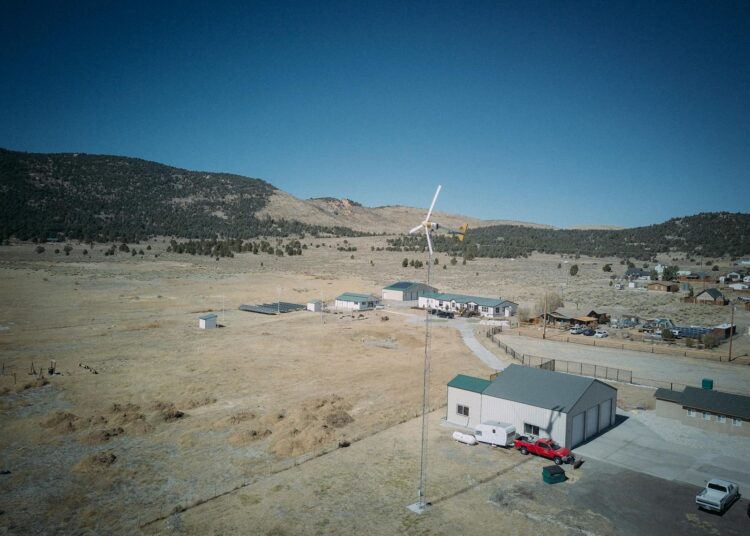By Positive Phil, for the Positive Phil Blog
Renewable energy is transforming the way we power our world, offering sustainable solutions that protect our planet for future generations. For young readers, think of renewable energy as a magical toolbox filled with nature’s tools—like sunlight, wind, and water—that create electricity without ever running out. In this article, we’ll explore two key ways renewable energy is used: behind the meter and large scale. It’s like choosing between powering your own toy or lighting up an entire toy store! We’ll break it down in a way that’s easy to understand, with examples and fun analogies to spark curiosity.
What is Renewable Energy?
Renewable energy comes from natural resources that replenish themselves, unlike coal or oil, which are finite and create pollution. These sources are clean, sustainable, and help keep our air and water fresh. Here are the main types of renewable energy:
- Solar Power: Energy from sunlight, captured by solar panels. Imagine the sun as a giant flashlight shining free energy on Earth. Learn more at the U.S. Department of Energy’s Solar Energy page.
- Wind Power: Energy from moving air, harnessed by wind turbines. Picture giant pinwheels spinning to generate electricity. Explore wind energy at National Geographic’s Wind Power Resource.
- Hydropower: Energy from moving water, often through dams. Think of a waterwheel spinning in a river to make power. Visit Hydropower Basics from the U.S. Geological Survey for details.
- Biomass: Energy from organic materials like plant waste. It’s like using leftover corn stalks to create fuel. Check out Biomass Energy at the EPA.
- Geothermal Energy: Energy from the Earth’s internal heat. Imagine tapping into a warm underground spring to power homes. Learn more at Geothermal Energy Information from NREL.
Unlike fossil fuels, which release harmful smoke and gases, renewable energy sources produce little to no pollution, making them a win for our planet and our health.
Behind the Meter: Powering Your Own Space
“Behind the meter” refers to generating electricity at a specific location—like a home, school, or small business—for personal use. The “meter” is the device that tracks how much electricity you buy from the utility company. When you produce your own power, it’s used “behind” the meter, reducing your reliance on the grid.
How Does It Work?
The most common behind-the-meter system is solar panels installed on rooftops. These panels act like sun-catching sponges, converting sunlight into electricity to power lights, appliances, or even a gaming console. If you generate more electricity than you need, some regions allow net metering, where excess power is sent back to the grid, potentially lowering your utility bill. According to the Solar Energy Industries Association, net metering is available in many U.S. states, encouraging homeowners to go solar.
Other behind-the-meter technologies include:
- Small Wind Turbines: Compact turbines for yards or small properties, ideal for windy areas. They’re like personal windmills generating power.
- Battery Storage Systems: Devices like the Tesla Powerwall store extra energy for use when the sun isn’t shining or the wind isn’t blowing, acting like a power piggy bank.
- Micro-Hydropower: For properties near streams, small water turbines can generate electricity, as explained by the U.S. Department of Energy.
Benefits of Behind-the-Meter Systems
- Cost Savings: By producing your own electricity, you reduce your utility bills. The National Renewable Energy Laboratory notes that solar panels can significantly cut energy costs over time.
- Environmental Impact: Clean energy reduces greenhouse gas emissions, helping combat climate change. It’s like giving the Earth a big, green hug.
- Energy Independence: Generating your own power means less dependence on utility companies, giving you control over your energy future.
For example, a school with solar panels on its roof can power classrooms, computers, and even outdoor lights for evening events. This not only saves money but also teaches students about sustainability. Programs like Solar for Schools are helping schools across the country adopt behind-the-meter solar.
Large Scale: Powering Communities
Large-scale renewable energy projects are designed to produce electricity for thousands of homes, businesses, and entire communities. These systems are built on a massive scale and connected to the power grid, delivering energy over long distances to where it’s needed.
How Does It Work?
Large-scale projects amplify the technologies used in behind-the-meter systems. They include:
- Solar Farms: Vast arrays of solar panels spread across fields or deserts, like a sea of sun-catching mirrors. The Topaz Solar Farm in California, for instance, powers over 160,000 homes.
- Wind Farms: Clusters of towering wind turbines, often located in windy regions or offshore. The Alta Wind Energy Center is one of the largest in the U.S., generating enough power for hundreds of thousands of homes.
- Hydropower Dams: Massive structures like the Hoover Dam use flowing water to spin turbines, producing electricity for millions.
- Geothermal Plants: Facilities like The Geysers in California tap into underground heat to generate reliable power.
- Biomass Facilities: Large plants that burn organic waste to produce electricity, often supporting rural economies. Learn more at Biomass Power Association.
These projects are typically located in remote areas with abundant resources, such as sunny deserts or windy coastlines. The electricity is transmitted through power lines to cities and towns, as explained by the U.S. Energy Information Administration.
Benefits of Large-Scale Systems
- Widespread Impact: A single project can power entire cities, making clean energy accessible to many. For example, the Ivanpah Solar Power Facility provides electricity to 140,000 homes.
- Reliability: Advanced technologies, like energy storage and grid management, ensure consistent power delivery, even when weather conditions vary.
- Economic Growth: Large-scale projects create jobs and boost local economies, as highlighted by the American Clean Power Association.
For instance, an offshore wind farm can generate enough electricity to power a small city, reducing reliance on fossil fuels and creating a cleaner environment for everyone.
Comparing Behind the Meter and Large Scale
Here’s a simple breakdown of the differences:
- Behind the Meter:
- Scale: Small, designed for individual homes, schools, or businesses.
- Purpose: Generates power for on-site use.
- Example: Solar panels on a house or a small wind turbine at a farm.
- Impact: Saves money and reduces emissions for a single user.
- Large Scale:
- Scale: Massive, built to supply entire communities or regions.
- Purpose: Produces power for the grid, distributed to many users.
- Example: A solar farm in a desert or a hydropower dam on a river.
- Impact: Powers thousands, creates jobs, and drives systemic change.
Both approaches are vital to a sustainable future, working together like a team to make clean energy a reality for everyone. Behind-the-meter systems empower individuals, while large-scale projects provide the backbone for widespread adoption.
Why Renewable Energy Matters
Renewable energy, whether behind the meter or large scale, is like planting seeds for a healthier planet. By reducing pollution, it protects our air, water, and wildlife, ensuring a better world for kids growing up today. The Environmental Protection Agency emphasizes that clean energy is key to fighting climate change, which affects everything from weather patterns to animal habitats.
For young readers, renewable energy is also exciting because it’s like a superhero power from nature! The sun, wind, and water are working hard to light up your toys, charge your tablets, and keep your schools running. Plus, the renewable energy industry is creating cool jobs for the future—maybe you’ll design the next big solar panel or wind turbine!
Looking Ahead
The future of renewable energy is bright, with innovations making it more affordable and efficient every year. Behind-the-meter systems are becoming more accessible, with companies like Sunrun offering affordable solar solutions for homes. Large-scale projects are expanding too, with global investments in clean energy reaching $1.7 trillion in 2023, according to BloombergNEF.
For kids, families, and schools, getting involved is easier than ever. You can start by learning about renewable energy through resources like NASA’s Climate Kids, advocating for solar panels at your school, or even visiting a nearby wind farm if one’s open to the public. Every step counts toward a cleaner, greener world.
So, next time you see a solar panel gleaming in the sun or a wind turbine spinning in the breeze, give it a big smile. It’s part of a big, exciting mission to power our world with nature’s magic—and you can be part of that adventure!
Follow Positive Phil for more inspiring stories about sustainability and innovation!


















